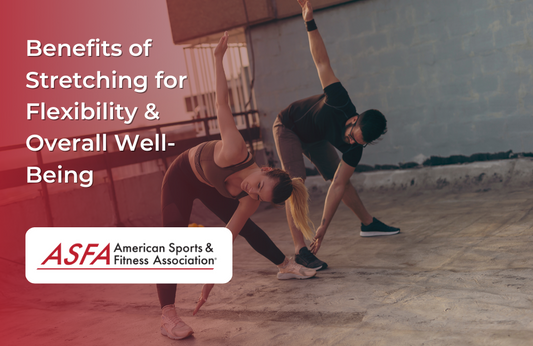This article uncovers the benefits of stretching, explaining how it enhances flexibility, boosts performance, relieves stress, and prevents injuries.
Key Takeaways
-
Stretching enhances flexibility and range of motion, essential for daily activities and overall physical health.
-
Regular stretching improves physical performance by boosting muscle elasticity, coordination, and reducing injury risks.
-
Incorporating a stretching routine supports mental well-being, relieving stress and improving mood and focus.
Improved Flexibility and Range of Motion
One of the most immediate benefits of stretching is improved flexibility and range of motion. Dynamic stretching, which involves active movements, prepares the muscles for physical activities and helps maintain flexibility. Incorporating dynamic stretches into your routine can make everyday movements smoother and less strenuous.
Static stretching, where you hold a stretch for a certain period, is equally important. Holding a static stretch for 30-60 seconds can significantly enhance muscle flexibility and range of motion. This type of stretching contributes to joint stability by improving the strength and functionality of surrounding muscles.
Maintaining a regular stretching routine prevents the decrease of range of motion over time, ensuring continued ease of movement. This is crucial for performing daily activities and maintaining overall physical health. Whether it’s a gentle hamstring stretch or a more complex PNF stretching technique, regular stretching keeps your muscles flexible and your joints healthy.
Enhanced Physical Performance
Stretching isn’t just about flexibility; it also enhances physical performance. Dynamic stretching, in particular, can boost coordination and balance, which are essential for athletic performance. Athletes often incorporate dynamic stretches into their warm-ups to improve speed and agility, preparing their entire body for the rigors of sports.
Increasing muscle elasticity through stretching can boost physical performance. Studies indicate that dynamic stretching may elevate power output during explosive movements. Whether sprinting, jumping, or lifting weights, stretching aids in better performance and reaching fitness goals.
Additionally, muscle flexibility enhances performance and reduces injury risks. Improved compliance of muscle-tendon units from stretching is crucial in high-intensity sports for effective energy absorption and release. A regular stretching routine is vital for overall performance enhancements in any physical activity.
Reduced Muscle Tension and Stress Relief
In today’s fast-paced world, stress and muscle tension are common issues. Stretching can be a powerful tool to disrupt this cycle. Regular stretching exercises help relax tense muscles and alleviate muscle tightness, contributing to a sense of well-being. Engaging in a regular stretching routine can combat the muscle tightness caused by everyday activities, leading to better overall comfort and reducing muscular tension.
Stretching promotes muscular relaxation, reducing stress and anxiety. It alleviates tension, often a source of discomfort and chronic pain. Incorporating stretching into your daily routine helps diminish tension, enhancing both mental and physical health, as pelvis relieves stress.
Both dynamic and static stretches reduce muscle tension. Dynamic stretching involves active movements to prepare muscles for activities, while static stretching focuses on holding poses to enhance flexibility and relaxation. Combined, these techniques significantly reduce stress and improve quality of life, including static and dynamic stretching.
Better Posture and Alignment
Good posture is the foundation of a healthy body, and stretching can play a crucial role in achieving it. Practicing stretching techniques regularly can lead to improved spinal mobility, which is essential for maintaining good posture. A regular stretching routine can enhance overall body awareness, helping you correct long-standing postural issues.
Stretching exercises that enhance muscle flexibility and strength can reduce stress on the neck and shoulders, resulting in fewer tension headaches. Regular stretching can gradually correct postural issues, relieving muscle strain and discomfort.
Gentle stretches for tight muscles, particularly in the hips and back, help maintain alignment and improve posture. Flexible muscles and a mobile spine from stretching enable you to stand tall and move confidently.
Increased Blood Flow and Circulation
Stretching also has significant benefits for your circulatory system. Stretching exercises increase blood flow to muscles, which is essential for delivering oxygen and nutrients. This enhanced blood flow aids recovery and helps reduce muscle soreness after physical activities.
Regular stretching enhances muscular relaxation and supports cardiovascular health. Combining light cardio with stretching improves circulation and promotes overall health. Increased blood flow from stretching also maintains muscle flexibility and supports physical performance.
Prevention and Relief of Back Pain
Lower back pain is a common issue that can be alleviated through stretching. Tight hip flexors are often linked to lower back pain and discomfort, but improving the flexibility of these muscles can provide relief. Specific stretches for hip flexors can improve overall mobility and alleviate back pain.
Stretching techniques targeting the back and hip areas can prevent and treat chronic back pain. A regular routine with these exercises helps maintain spinal mobility and reduces back injury risks.
Working with a physical therapist to develop a personalized stretching routine can be particularly beneficial for those who experience chronic back pain. Proper alignment and muscle stretching can alleviate back pain and enhance overall quality of life.
Alleviation of Tension Headaches
Stretching can relieve debilitating tension headaches, often caused by tight muscles near the base of the skull and neck. Addressing muscle tightness in these areas through targeted stretching reduces the severity and frequency of headaches.
Regular stretching of neck and shoulder muscles alleviates tension headaches and improves neck function. Incorporating these stretches into your daily routine can enhance quality of life by reducing discomfort.
By focusing on muscular relaxation and reducing muscle tightness, stretching can significantly improve your overall well-being. Whether it’s a gentle stretch or a more intense routine, regular stretching can help you feel better and live pain-free.
Enhanced Muscle Strength and Power
Stretching enhances muscle strength and power, not just flexibility. Including stretching in your routine improves muscle function during activities, boosting strength.
Passive static stretching typically yields larger flexibility improvements than active stretching methods. Increased flexibility from stretching can enhance performance in strength-related activities.
A consistent stretching routine bolsters muscle strength and enhances power in physical activities. For athletes or anyone aiming to stay fit, stretching aids in achieving goals, offering benefits beyond flexibility.
Injury Prevention
One of the most compelling reasons to incorporate stretching into your routine is injury prevention. Regular stretching maintains muscle length and flexibility, reducing injury risk during physical activity. It also strengthens key muscle groups, supporting proper alignment and minimizing injury risks.
Flexible muscles improve balance, preventing falls and enhancing overall strength in physical activities. Stretching readies muscles for performance, aiding in injury prevention.
Though evidence on stretching roles in injury prevention varies by sport, a regular stretching routine offers significant benefits. Maintaining muscle flexibility and strength reduces injury likelihood, promoting a more active, pain-free life.
Improved Mood and Mental Focus
Stretching benefits both body and mind, linked to increased serotonin levels that enhance mood and reduce stress. Disrupting the cycle of muscle tension and pain, stretching offers relief from stress-related discomfort.
Mindfulness during stretching can amplify its mood-enhancing effects. A regular stretching routine improves mental clarity and sleep quality, supporting overall mental health. Routine stretching fosters better mental focus and a more positive outlook on life.
Summary
In summary, stretching offers a multitude of benefits that go beyond just flexibility. From enhancing physical performance to preventing injuries and improving mental health, the advantages of incorporating a regular stretching routine are vast. Stretching can improve your quality of life, making everyday movements easier and reducing discomfort.
We encourage you to integrate stretching into your daily routine. Whether you’re looking to alleviate back pain, reduce stress, or enhance athletic performance, stretching can help you achieve your goals. Embrace the benefits of stretching and experience the positive changes it can bring to your life.
Frequently Asked Questions
How often should I stretch to see benefits?
To see benefits, aim to stretch daily, as a regular routine enhances flexibility, relieves muscle tension, and promotes overall well-being. Consistency is key for optimal results.
Can stretching help with back pain?
Yes, stretching can significantly alleviate back pain by enhancing flexibility and maintaining spinal mobility. Incorporating regular stretching into your routine can lead to long-term relief and prevention of future discomfort.
What types of stretching are best for improving physical performance?
Dynamic stretching is the most effective type for improving physical performance, as it involves active movements that prepare your body for rigorous activities. Incorporating this into your warm-up routine can significantly enhance your physical capabilities.
How does stretching improve mental focus?
Stretching improves mental focus by reducing stress and enhancing serotonin levels, leading to increased clarity and mindfulness. Incorporating stretching into your routine can significantly boost your mental performance.
Is stretching effective for preventing injuries?
Stretching is effective for preventing injuries as it maintains muscle length and flexibility, ultimately reducing the risk during physical activities. Incorporating regular stretching into your routine can enhance overall performance and safety.





